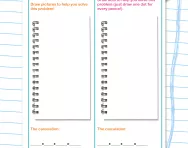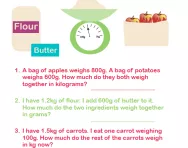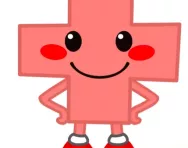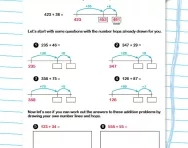Important update from TheSchoolRun
For the past 13 years, TheSchoolRun has been run by a small team of mums working from home, dedicated to providing quality educational resources to primary school parents. Unfortunately, rising supplier costs and falling revenue have made it impossible for us to continue operating, and we’ve had to make the difficult decision to close. The good news: We’ve arranged for another educational provider to take over many of our resources. These will be hosted on a new portal, where the content will be updated and expanded to support your child’s learning.
What this means for subscribers:
- Your subscription is still active, and for now, you can keep using the website as normal — just log in with your usual details to access all our articles and resources*.
- In a few months, all resources will move to the new portal. You’ll continue to have access there until your subscription ends. We’ll send you full details nearer the time.
- As a thank you for your support, we’ll also be sending you 16 primary school eBooks (worth £108.84) to download and keep.
A few changes to be aware of:
- The Learning Journey weekly email has ended, but your child’s plan will still be updated on your dashboard each Monday. Just log in to see the recommended worksheets.
- The 11+ weekly emails have now ended. We sent you all the remaining emails in the series at the end of March — please check your inbox (and spam folder) if you haven’t seen them. You can also follow the full programme here: 11+ Learning Journey.
If you have any questions, please contact us at [email protected]. Thank you for being part of our journey it’s been a privilege to support your family’s learning.
*If you need to reset your password, it will still work as usual. Please check your spam folder if the reset email doesn’t appear in your inbox.
What is a sum?

What is a sum?
The sum of two numbers is the answer you get when you add them both together. So the sum of 5 and 4 is 9.
There was a time when teachers used the word 'sum' to name the following addition number sentence:
9 + 5 = 14
They would often then mistakenly use the same word to name these subtraction, multiplication and division number sentences:
9 - 4 = 5
7 x 3 = 21
80 ÷ 10 = 8
To get round this confusion, we now refer to all of the above (in bold) as number sentences.
Sums in KS1 and KS2 maths
Children in Key Stage 2 need to be familiar with the word 'sum' as it often comes up in mental maths tests. For example:
What is the sum of 6 and 12?
What is the sum of 8, 2 and 9?
They may also carry out word problems or investigations in maths lessons which rely on them being familiar with the word, for example:
Word problem:
Mary has £35 in one bank account and £82 in another. What is the sum of money in both her bank accounts?
Word problem answer: £117
Investigation:
I am thinking of a two-digit number. The sum of both its digits is 9. The number is bigger than 50 and a multiple of 9. What could it be?
Investigation answer: 54, 63, 72, 81 or 90
Children need to be exposed to a variety of mathematical vocabulary as often as possible, rather than just seeing numbers and symbols.










